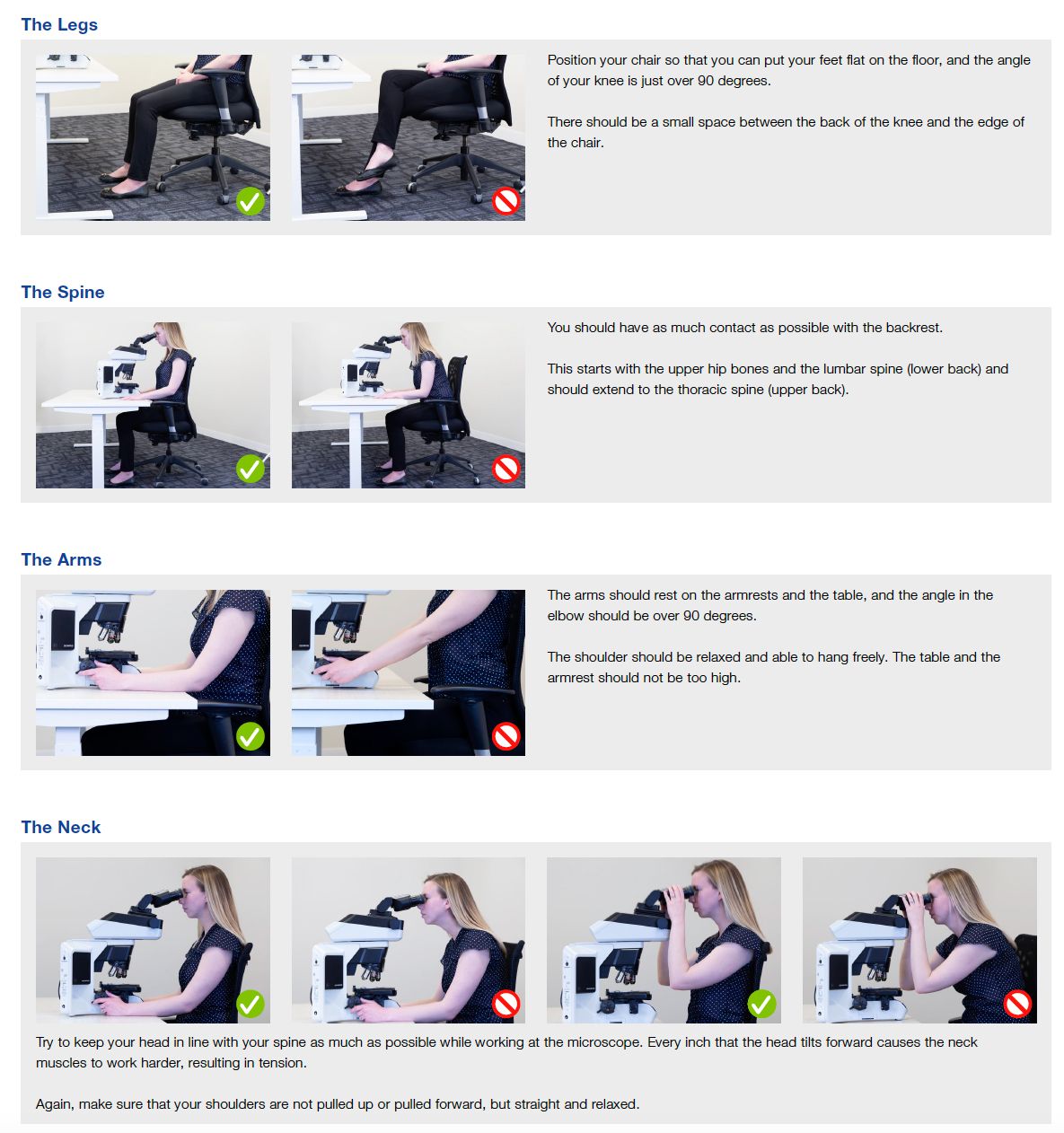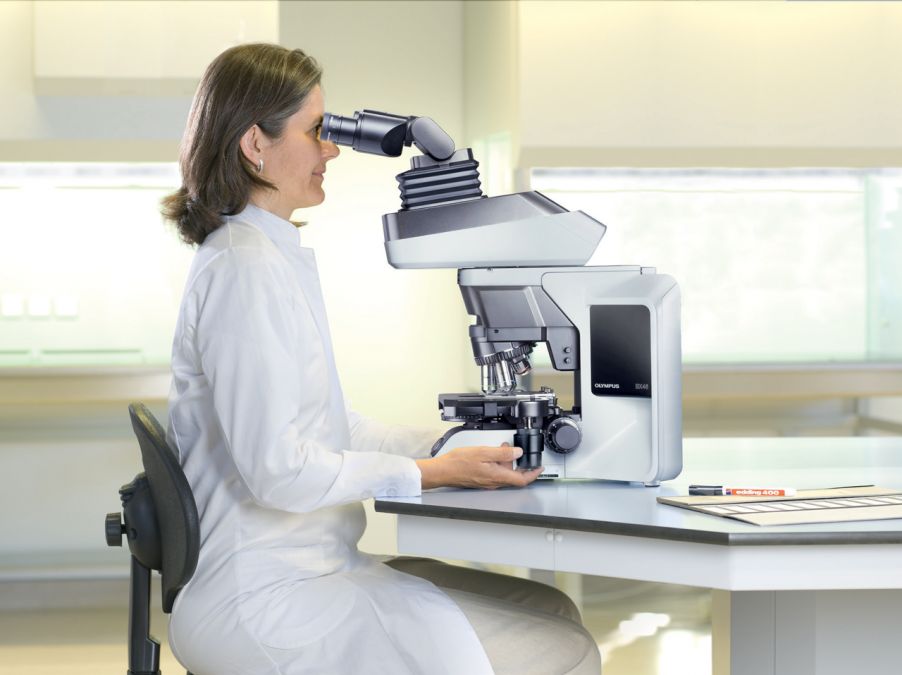Have you ever experienced a stiff neck, sore back, discomfort in your shoulders, arms, or hands after a long day of sitting at a microscope? This is most likely due to the lack of ergonomics either through the equipment you are using or how you are sitting. Good posture and ergonomics go hand in hand. When you have the right ergonomically designed microscope, it can help you to correctly position your body so you avoid strain and pain.
Ergonomics can also help improve work efficiency by keeping you comfortable and minimizing prolonged injuries. In this blog post, I will focus on the Olympus ergonomic solutions for routine microscopy and provide some tips on how you should sit while at your microscope.

Ergonomically Designed Microscopes Promote Good Posture and Prevent Strain
Olympus provides several ergonomic solutions for routine microscopy, such as flexible observation heads, a light intensity manager, low slide stage and low-positioned microscope controls. The Olympus BX46 upright microscope is well-suited for clinical routine microscopy as it was designed with all these ergonomics in mind.
The frame of the BX46 microscope has a fixed ultra-low slide stage that enables you to keep your arms and hands resting comfortably on your desk’s surface. The ultra-low stage reduces how far your hands must travel when moving or changing slides. It also provides low-positioned microscope controls, so you can maintain a 90- to 120-degree elbow angle, which is the ideal angle to prevent strain.
Adjustable Features Adapt to Individual Users’ Ideal Positions

The BX46 microscope also offers a unique ergonomic observation head that not only tilts up and down but also slides forward and back and is height adjustable. This unique design enables you to keep your back and neck upright, allowing the spinal column to assume its natural curvature. This ergonomic head can be adjusted for any user so that you remain comfortable throughout the day.
Lastly, the BX46 microscope is equipped with a light intensity manager. You can set the light intensity for each objective, and the microscope will remember the setting. Therefore, when you are quickly changing the objectives while viewing your sample, the light intensity will adjust automatically eliminating the need to move your arm to adjust the light for each objective.

Increasing Your Ergonomics and Posture Awareness Are Keys to Good Health
A microscope’s ergonomically designed features can help alleviate aches and pains caused by routine microscopy, but it also needs to be paired with the correct sitting posture. When you are working at your microscope for long periods of time, make sure to frequently check and correct your posture using the principles below.

I recommend printing the poster and placing it in your lab where microscope users can readily see it. A little visual reminder may help prevent a lot of pain and strain, that, and an ergonomic microscope.
Related Content
Download the Poster: Make Ergonomics Your Routine
Ebook: Ergonomics and Microscopy - Resource Guide
Routine Microscopy: Improving Productivity Through Better Ergonomics


.jpg?rev=7659)